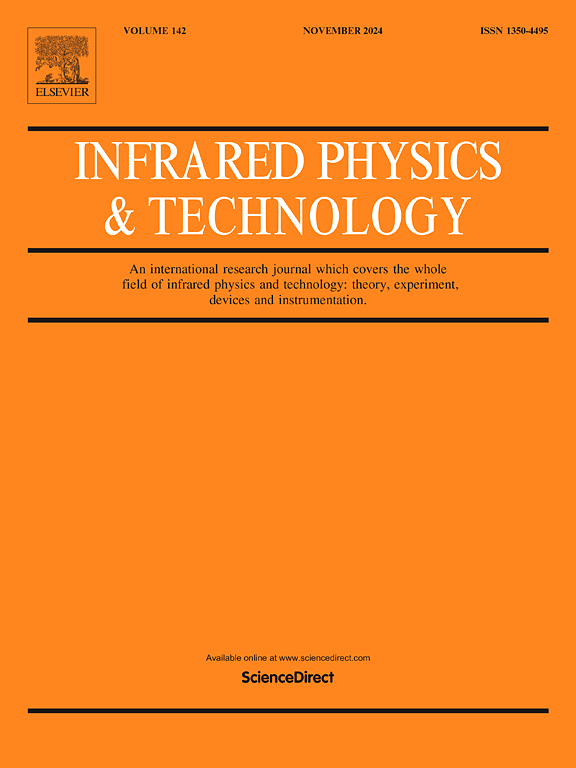Denoising diffusion based infrared and visible image fusion with transformer
IF 3.1
3区 物理与天体物理
Q2 INSTRUMENTS & INSTRUMENTATION
引用次数: 0
Abstract
Infrared-visible image fusion (IVF) aims to combine the complementary information from infrared and visible images. In the field of image fusion, generative adversarial networks (GANs) have achieved promising results. However, the issues of unstable training and mode collapse remain challenging to resolve. Therefore, we propose a novel IVF method based on a diffusion model combined with fusion knowledge priors, termed DDFT. DDFT is divided into two parts, a pre-fusion module and a diffusion model. Specifically, it first obtains images containing the prior distribution of the fusion task through a pre-fusion module. Subsequently, the forward diffusion process gradually removes distinguishable features from the output of the pre-fusion module, The reverse diffusion process learns the fusion knowledge prior distribution and leverages a Transformer module to capture global features, generating high-quality fused images. Comparative experiments demonstrate that DDFT excels in IVF tasks, especially in preserving weak textures. Generalization experiments illustrate that DDFT preserves image features in both simple and complex environments. Ablation experiments further validated the crucial role of the fusion prior information obtained through pre-fusion in DDFT. Compared to existing diffusion models that are only used as feature extractors or with fixed parameters, DDFT is the first to achieve an end-to-end trainable diffusion framework for directly generating fused images.
利用变压器对基于扩散的红外和可见光图像进行去噪融合
红外-可见光图像融合(IVF)旨在结合红外图像和可见光图像的互补信息。在图像融合领域,生成对抗网络(GANs)取得了可喜的成果。然而,不稳定的训练和模式崩溃问题仍然难以解决。因此,我们提出了一种基于扩散模型与融合知识先验相结合的新型 IVF 方法,即 DDFT。DDFT 分为预融合模块和扩散模型两部分。具体来说,它首先通过预融合模块获取包含融合任务先验分布的图像。随后,正向扩散过程会从预融合模块的输出中逐渐去除可区分的特征,反向扩散过程会学习融合知识的先验分布,并利用变换器模块捕捉全局特征,生成高质量的融合图像。对比实验表明,DDFT 在 IVF 任务中表现出色,尤其是在保存弱纹理方面。泛化实验表明,无论是在简单环境还是复杂环境中,DDFT 都能保留图像特征。消融实验进一步验证了通过预融合获得的融合先验信息在 DDFT 中的关键作用。与现有的仅用作特征提取器或具有固定参数的扩散模型相比,DDFT 首次实现了端到端可训练扩散框架,可直接生成融合图像。
本文章由计算机程序翻译,如有差异,请以英文原文为准。
求助全文
约1分钟内获得全文
求助全文
来源期刊
CiteScore
5.70
自引率
12.10%
发文量
400
审稿时长
67 days
期刊介绍:
The Journal covers the entire field of infrared physics and technology: theory, experiment, application, devices and instrumentation. Infrared'' is defined as covering the near, mid and far infrared (terahertz) regions from 0.75um (750nm) to 1mm (300GHz.) Submissions in the 300GHz to 100GHz region may be accepted at the editors discretion if their content is relevant to shorter wavelengths. Submissions must be primarily concerned with and directly relevant to this spectral region.
Its core topics can be summarized as the generation, propagation and detection, of infrared radiation; the associated optics, materials and devices; and its use in all fields of science, industry, engineering and medicine.
Infrared techniques occur in many different fields, notably spectroscopy and interferometry; material characterization and processing; atmospheric physics, astronomy and space research. Scientific aspects include lasers, quantum optics, quantum electronics, image processing and semiconductor physics. Some important applications are medical diagnostics and treatment, industrial inspection and environmental monitoring.

 求助内容:
求助内容: 应助结果提醒方式:
应助结果提醒方式:


